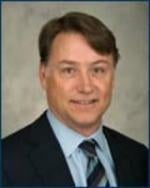A panel of the U.S. Court of Appeals for the Federal Circuit endorsed patent-eligibility of DNA molecules in a decision much awaited by the biotechnology community.
Isolated DNA molecules are patent-eligible, reaffirmed the U.S. Court of Appeals for the Federal Circuit in Ass’n for Molecular Pathology et al. v. Myriad Genetics, Inc. et al., lifting a cloud of uncertainty over DNA composition patents.
“The isolated DNA molecules before us are not found in nature. They are obtained in laboratory and are man-made, the product of human ingenuity,” stated the Federal Circuit, on remand from the Supreme Court of the United States for further consideration in light ofMayo Collaborative Services v. Prometheus, Inc., 132 S.Ct. 1289 (2012).
In an opinion that essentially tracked their prior analysis in 2011 before appeal to the Supreme Court, Judges Lourie, Moore and Bryson re-staked their positions. All three judges agreed that cDNAs and screening methods involving transformed cells are patent-eligible and method claims comparing or analyzing DNA sequences are not.
The judges varied, however, regarding isolated genomic DNA molecules with sequences identical to those found in nature. Judges Lourie and Moore agreed that such isolated DNA molecules were patent eligible, but for different reasons.
Judge Lourie found the isolated genomic DNA molecules to be patent eligible because they are “markedly different … from those found in nature.” Passing on the Mayo decision, Judge Lourie instead relied on the Supreme Court’s Chakrabarty and Funk Brothersdecisions. “Mayo does not control the question of patent-eligibility of [isolated DNA molecules] claims. They are claims to compositions of matter, expressly authorized as suitable patent-eligible subject matter in §101,” Judge Lourie penned.
Judge Moore agreed that smaller genomic DNA molecules are patent-eligible, but would have found long genomic DNA molecules that include most or all of a gene patent-ineligible if she “were deciding this case on a blank canvas. … But we do not decide this case on a blank canvas,” wrote Judge Moore. “Congress has, for centuries, authorized an expansive scope of patentable subject matter. Likewise, the United States Patent Office has allowed patents on isolated DNA sequences for decades … . I will not strip an entire industry of the property rights it has invested in, earned and owned for decades unchallenged under the facts of this case,” she wrote affirming the patent eligibility of isolated genomic DNA molecules.
Judge Bryson dissented. In his opinion, the native gene and claimed genomic DNA molecules were “the same, structurally and functionally,” making them patent-ineligible. The principle disagreement between Judges Lourie and Bryson was whether the structural differences between the native genes and the isolated genomic DNA molecules were respectively “markedly different” or merely “necessarily incidental to the extraction of the genes.” This difference of opinion underscores the need for “why the exceptions to patentability apply only to the clearest cases,” noted Judge Moore, cautioning against “an arbitrary decision based on a judge-made exception.”
As to the method claims, the panel unanimously found that Myriad’s claims of comparing gene sequences did not constitute patentable subject matter. Indeed, the court found the claims “indistinguishable” from the method claims struck down in Mayo v. Prometheus, stating that the Supreme Court “made clear that such diagnostic methods in that case essentially claim natural laws not eligible for patent.”
Noteworthy, however, the Federal Circuit focused again on a method for screening potential cancer therapeutics via changes in cell growth rates of transformed cells. The court maintained its previous rejection of Plaintiffs’ argument that the method constituted an abstract idea which preempted the basic scientific principle that a slower growth rate in the presence of a potential therapeutic compound suggests that the compound is a cancer therapeutic. Instead, the court found that the cells were transformed, which reflected the “hand of man,” and thus constituted patentable subject matter. Performing operations on those transformed cells, even if the operations were known, did not change the underlying analysis that the subject matter was patentable. “Thus, once one has determined that a claimed composition of matter is patent-eligible subject matter, applying various known types of procedures to it is not merely applying conventional steps to a law of nature.”
While the appellant led by the American Civil Liberties Union is likely to appeal the decision to the Supreme Court, the technological thicket underpinning patent eligibility in this case—is an isolated genomic DNA molecule structurally the same or different—may caution the Supreme Court against taking it up. Moreover, patentability analyses under §§ 102, 103 and/or 112 may render moot the need for the Supreme Court to reach a decision on patent eligibility of genomic DNA sequences.
Of note, this case further ratifies the trend toward narrowing the scope of patent-eligible method claims that compare or analyze naturally occurring molecules or phenomenon.




 />i
/>i

